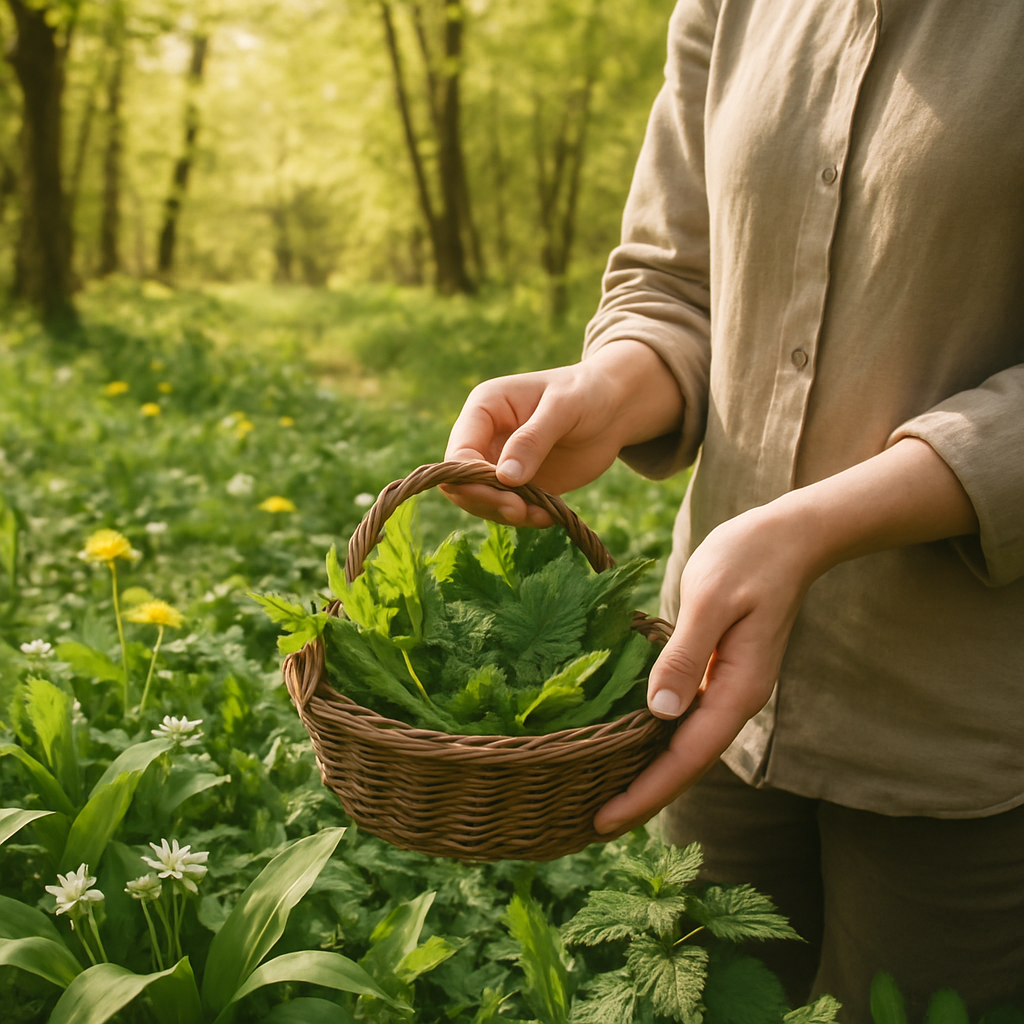Natures Pharmacy Exploring the Health Benefits of Foraging Wild Plants

Imagine taking a leisurely walk through a forest. The sun filters through the trees, birds chirp from unseen branches, and the scent of pine needles lingers in the air. Now, picture yourself noticing a patch of wild garlic or perhaps a cluster of dandelions. Most of us would shuffle past without a second glance, but what if I told you that these unassuming plants offer a treasure trove of health benefits? There’s something magical about using what nature provides to enhance our well-being, and foraging wild plants is like unlocking a hidden pharmacy right in our backyard.
Foraging has become quite a trend lately, almost like a foodie fad, but without the pretentiousness of avocado toast. There’s a raw authenticity in plucking a plant from the wild and knowing it can be transformed into a nourishing meal or a medicinal concoction. However, it isn’t just about adding some wild flair to your salad. Foraging offers a way to reconnect with nature, something that’s becoming increasingly rare in our tech-obsessed world. It’s almost like an old-school scavenger hunt, minus the map and pirates.
The Science and Art of Foraging
Now, before you dash off into the woods with a basket and a grin, let’s chat about what makes foraging both a science and an art. There’s a delicate balance between knowing what is edible and what could send you to the emergency room. Not all plants are friendly, and some have a mischievous side, like the Death Cap mushroom, which isn’t as appetizing as it sounds.
Experts like Samuel Thayer, author of “The Forager’s Harvest,” have dedicated years to studying wild plants. Thayer emphasizes that foraging requires respect for nature and caution. He advises budding foragers to “start with a few easy-to-identify species and gradually expand your knowledge.” In other words, don’t try to become a foraging maestro overnight; patience is key.
There are fascinating studies out there, like the one by the Journal of Ethnobiology, which highlights the traditional knowledge of indigenous communities in understanding the medicinal properties of local plants. These communities have been foraging for centuries, long before it was cool. Their knowledge is a testament to the deep connection between humans and the natural world. And it’s not just about food; plants like elderberry and echinacea have long been used for their immune-boosting properties.
A Journey of Discovery
Foraging isn’t just about what you can find; it’s about what you can learn. Take dandelions, for example. Most people consider them pesky weeds ruining their pristine lawns. But did you know that every part of the dandelion is edible and packed with vitamins A, C, and K? The root has even been used in traditional Chinese medicine for its detoxifying properties. It’s like finding out your annoying neighbor is actually a genius inventor.
I once tried making dandelion wine after reading about it in a foraging guide. It was a disaster. Picture a beverage that tastes like bitter regret with a hint of floral disappointment. Still, it was a learning experience. I realized that not every natural creation needs to be turned into a culinary masterpiece. Sometimes, you need to appreciate things for what they are, even if they don’t fit neatly into your plans.
Then there’s wild garlic, which is a favorite among many chefs for its subtle flavor. In spring, forests in the UK are blanketed with its broad leaves, and the smell is unmistakable. You can almost taste it in the air. Wild garlic can elevate a simple pasta dish or a homemade pesto, giving it a unique twist. It’s like the quiet, unassuming hero of the forest, waiting to transform your kitchen creations.
Whatever you’re foraging, keep the golden rules in mind: positively identify the plant, ensure you’re picking it sustainably, and always leave some for the wildlife and fellow foragers. It’s one of those rare activities where sharing isn’t just caring; it’s essential for the ecosystem.
More Than Just a Trend
The renewed interest in foraging isn’t just a hipster trend or a survivalist fallback. It speaks to a deeper yearning for authenticity and connection. In a world where you can get strawberries in December and order out-of-season produce from across the globe, foraging grounds us in reality. It reminds us that food has a season, a place, and a story.
In her book “Braiding Sweetgrass,” Robin Wall Kimmerer, a botanist and member of the Citizen Potawatomi Nation, beautifully illustrates the reciprocal relationship between humans and nature. She writes about gathering wild leeks and the sense of gratitude that accompanies such acts. It’s a reminder that foraging isn’t about taking; it’s about participating in a natural cycle.
Foraging can also be an act of rebellion against the homogenization of diets. In the monoculture fields of corn and soy, diversity is sidelined. Yet, when you forage, you’re embracing diversity in its raw, unfiltered form. You’re biting into something that hasn’t been modified, processed, or packaged. It’s a small act, but it feels significant.
A Few Surprising Tidbits
Here’s a nugget that might surprise you: nettles, those prickly plants that leave you itching and cursing, are actually a nutritional powerhouse. Once cooked, nettles lose their sting and can be used in soups, teas, or even as a spinach substitute. They’re rich in iron, calcium, and antioxidants. Who would have thought that something so irritating could be so beneficial?
And let’s not forget about mushrooms, which deserve an entire article on their own. The world of fungi is vast and mysterious, with species like the Chaga mushroom praised for its cancer-fighting properties. However, mushrooms require expertise to forage safely, as some varieties are deadly. So, if you’re venturing into mushroom territory, bring a knowledgeable friend, or at least a really good guidebook.
Foraging is like peeling back the layers of a book you didn’t know you owned. Each plant comes with its own chapter of history, uses, and stories. It’s a reminder of how much there is to discover, even in places we think we know.
As we wrap up this exploration, let’s not forget the importance of respecting nature and our place within it. Foraging is as much about humility as it is about discovery. It’s about acknowledging that while we can learn from nature, we’re also just visitors in its domain. So next time you find yourself in a forest, maybe take a moment to look closer at the wild plants around you. Who knows? You might just stumble upon nature’s best-kept secret.


